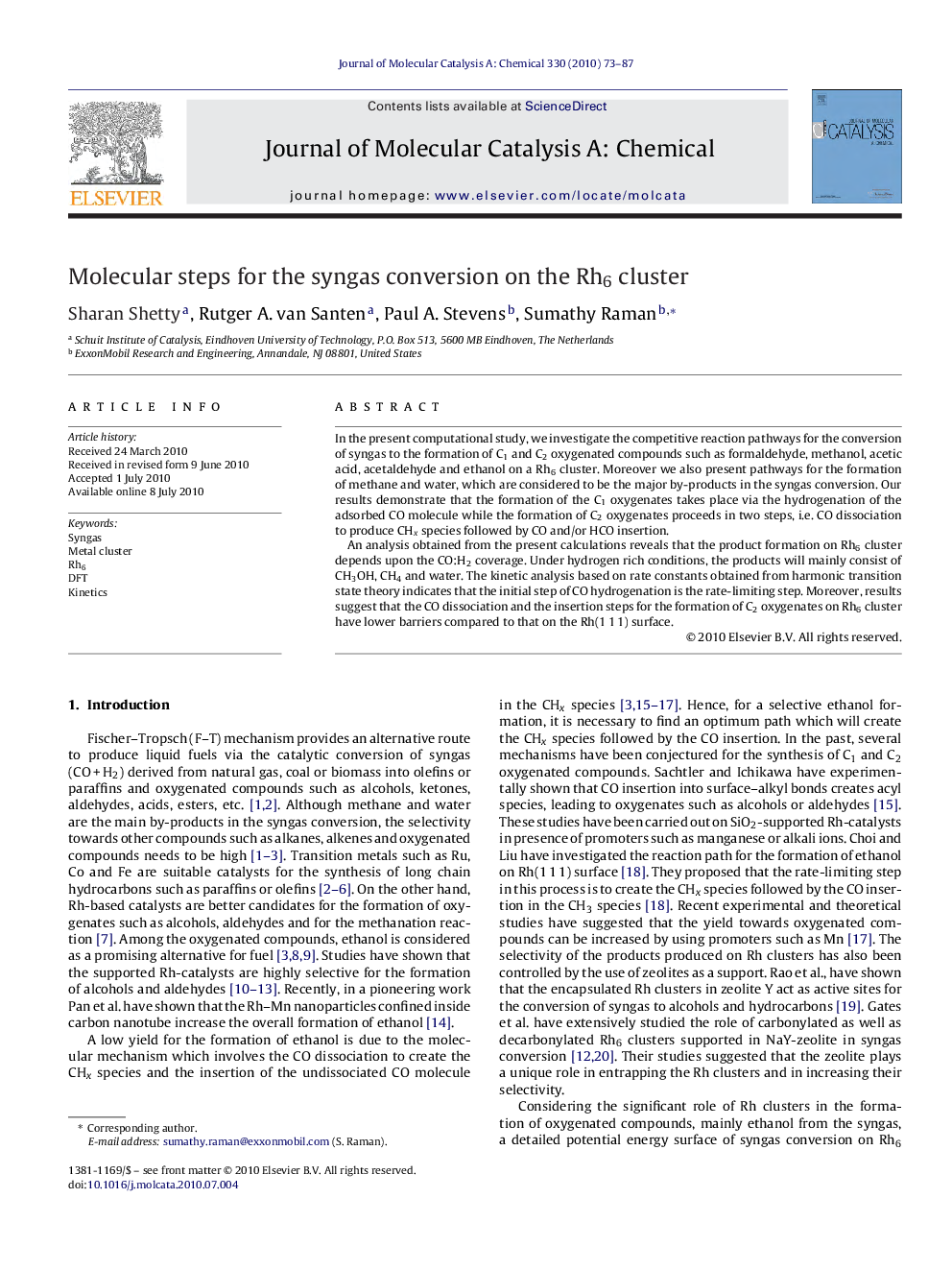| Article ID | Journal | Published Year | Pages | File Type |
|---|---|---|---|---|
| 66549 | Journal of Molecular Catalysis A: Chemical | 2010 | 15 Pages |
In the present computational study, we investigate the competitive reaction pathways for the conversion of syngas to the formation of C1 and C2 oxygenated compounds such as formaldehyde, methanol, acetic acid, acetaldehyde and ethanol on a Rh6 cluster. Moreover we also present pathways for the formation of methane and water, which are considered to be the major by-products in the syngas conversion. Our results demonstrate that the formation of the C1 oxygenates takes place via the hydrogenation of the adsorbed CO molecule while the formation of C2 oxygenates proceeds in two steps, i.e. CO dissociation to produce CHx species followed by CO and/or HCO insertion.An analysis obtained from the present calculations reveals that the product formation on Rh6 cluster depends upon the CO:H2 coverage. Under hydrogen rich conditions, the products will mainly consist of CH3OH, CH4 and water. The kinetic analysis based on rate constants obtained from harmonic transition state theory indicates that the initial step of CO hydrogenation is the rate-limiting step. Moreover, results suggest that the CO dissociation and the insertion steps for the formation of C2 oxygenates on Rh6 cluster have lower barriers compared to that on the Rh(1 1 1) surface.
Graphical abstractIn the present theoretical study we use density functional approach to investigate the reaction pathways of the elementary steps involved in the syngas conversion leading to C1, C2 oxygenated compounds, methane and water on Rh6 cluster.Figure optionsDownload full-size imageDownload high-quality image (35 K)Download as PowerPoint slide
